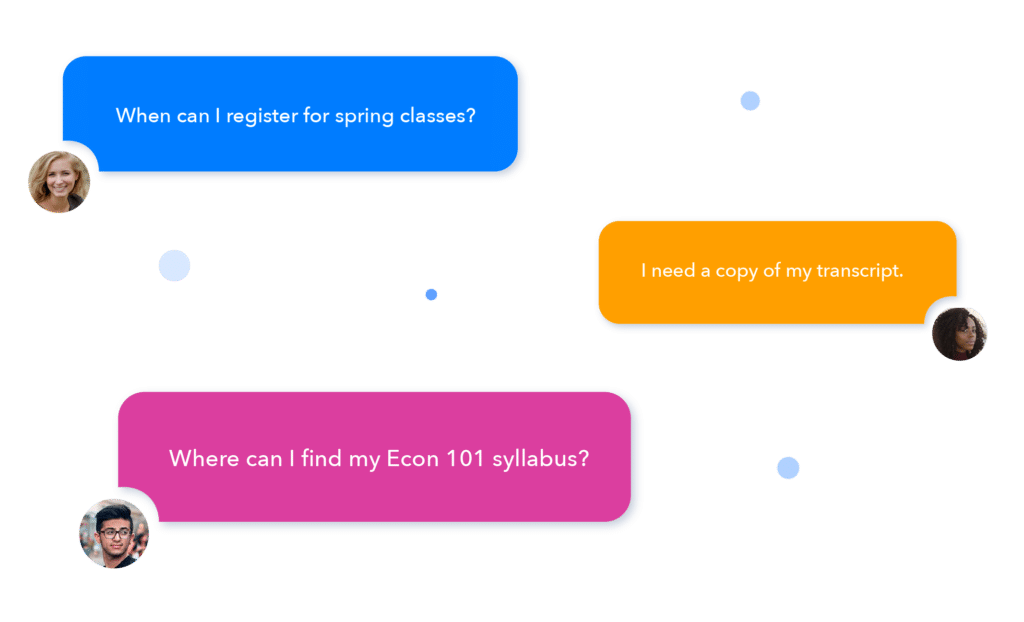What function does support automation play in higher education? How might technology help shape the future of higher education in light of COVID-19 and the digital revolution taking place?
The function of support automation in higher education is crucial for colleges and universities to consider as they move to meet the demands for increased technology, innovation, and curriculum. Higher education faces many challenges. Two examples include: shifting from print resources to digital resources that exist within the confines of restricted access journals and an online learning environment that delivers innovative course content among various platforms.
In both scenarios, faculty members require sufficient technological support, with the end goal being to increase institutional productivity, which will permit more time for research, teaching, and community engagement. If educational institutions do not provide additional support in terms of automated systems, faculty members have limited instructional opportunities due to the lack of time needed.
Fortunately, traditional systems are changing for the better. Digital learning is one of the most significant changes that has resulted from the integration of technology into higher education. Students no longer need to commute or relocate to different cities or countries to obtain their desired degrees.
Where are we today?
AI in higher education has greatly expanded educational opportunities. Previously, to get an education, people had to travel to learning centers. Today, vast amounts of information (music, books, videos, and photographs) is now available at one’s fingertips via the Internet. Formal learning opportunities are available online. Because of technological advancements, today’s learning opportunities are limitless.
In parallel, fewer people are watching television nowadays. Instead of commercials and rigid television schedules, consumers are streaming their favorite shows. Digital consumption behavior in our personal lives has also impacted how we want to interact with higher education.
It’s fascinating to see what’s going on in this industry, but it’s not shocking. We have all witnessed the rise of online applications, virtual learning, and other new teaching methods for years. Because barriers to education are being lifted, people from all walks of life may now learn. Today, full-time parents, workers, high school students, retirees, homebound, and even those with medical conditions may enroll in classes and even graduate without ever entering a classroom.
Delivering flexible education and embracing the automation technologies that make it possible opens up an entirely new vista for higher learning institutions. Through online classes, they may reach a limitless number of students. In addition, many universities are now offering free online courses to any student who is interested. The only expenses are those incurred if the student chooses to take tests to get certifications or degrees.

However, online classes are only the beginning. Artificial Intelligence (AI) and automation are making inroads into the classroom. For instance, intelligent chatbots use various technologies like algorithms and machine learning to empower instructors rather than replace them.
Thus, instructors can continue to engage a larger subset of students now that they have more time to do so. Instead of answering the same questions repeatedly, they might focus on making connections and providing relevant information.
From exploring the interior of a cell to going to distant planets, automated virtual and augmented reality tools may provide students with experiences that would otherwise be too expensive or difficult to reproduce in the real world.
For example, virtual reality representations of human organs may be used to teach students about the body. While such technologies are primarily intended to improve student learning, they may also save money. Dissections may be performed at any moment without needing a pricey cadaver in specific virtual anatomy courses.
Invariably, higher education has historically been out of reach for many people. Either the cost is prohibitively high, or the requirements are incompatible. Students today aren’t just 18-year-olds who recently graduated from high school. They are people of various ages, with many having careers, families, and hectic schedules. The more automated their educational journey becomes, the more appealing and feasible it is to enroll in college.
AI automates in fundamental ways, saving these new learners significant time and frustration so they may start a successful journey faster and stay there. Automation not only simplifies registration and other processes but also assists students in staying on track. To illustrate, analytics can predict whether students are in danger, give timely interventions to help them, and encourage them to achieve their goals by analyzing all of the data around each student.
Look inside any classroom, and you’ll see that, despite the material being taught to the majority, there are a large number of students who learn differently. They learn at different rates, have different struggles, and require different instruction.

Unfortunately, the classroom has not always been set up to help these students. Until now, that is.
Intelligent automation uses machine learning to collect data trends and provide insights to teachers. They may identify knowledge gaps and areas where students can improve. This information can even be used to change textbooks. As AI driven virtual teaching assistants supplement students’ learning, educators can also be more effective at what they do because they can modify their curriculum to fit the needs of all types of students.
Unquestionably, outside of the classroom, colleges are implementing intelligent automation technology. Many of the most common actions and inquiries may be completed without the aid of a human. Finding out where a class is held, how many hours a student needs to graduate, what prerequisite classes are required, and when events are scheduled are just a few examples of what automated chatbots may provide quickly and effectively.
Students relieve the strain put on administrators, professors, and classmates when they can promptly access the information they need. Chatbots allow students to get accurate answers quickly using standard instructions, and they seamlessly escalate tickets to the appropriate faculty or staff if the knowledge base does not know an answer.
Students should be able to register for classes, apply for and pay for financial assistance, and perform other necessary administrative tasks without waiting for a human. They can do so with support automation.

The COVID-19 pandemic invariably drove whole higher education systems to move to an online teaching-learning environment. Universities have had to embrace and alter the technology resources available at record speed and incorporate professors and researchers who lack inherent technological abilities for online instruction.
Digital education, on the other hand, needs appropriate infrastructure and technological platforms, powerful servers capable of handling virtual demand, and methodological training of professors and students for online delivery using all available technical and pedagogical resources.
It is important for higher education’s immediate and long-term success and value to guarantee that remote and hybrid learning experiences are equally successful and useful. As a result, almost every college and university, from small two-year institutions to big public and private institutions, has been struggling with the same issue: How can we utilize technology to connect (and sustain) students in this brave, new educational norm?


